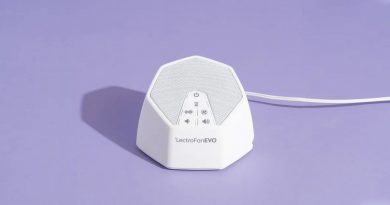7 Ways To Properly Track Your Fitness Progress
A growing number of people are getting on board with fitness. No doubt this is fantastic news. Strength training helps to maintain muscle mass, which we lose as we age. Additionally, it helps to burn fat by increasing metabolism.
Strength training has many other advantages as well. These include the formation of new bones and the strengthening of muscles.
But how can you be sure you’re on the correct track? How will you know if you’re not over or under-doing it? Hence, keeping track of your fitness development is important.
Why is it important to track your fitness?
First, keeping track of your progress increases your chances of achieving your objectives. After all, if you don’t track your progress, how will you know when you’ve achieved your goal? Therefore, measurement is always important. Here are some reasons why tracking your progress is vital:
- Motivates you to be consistent: Just looking at that tape measure and weighing equipment daily, can fill you with motivation.
- It establishes accountability: When you feel responsible in some way, it’s simpler to keep going. You’re also more likely to put forth more effort.
- Makes you stick to the plan: At the end of the day, only those succeed with any type of workout program who are dedicated to the process.
- Allows you to sense the need for a modification in your plan: If you’re consistently monitoring your development, you’ll be able to make the required adjustments. For example, you can modify the training time and duration, without losing sight of the major goal.
7 proven methods for measuring your fitness progress
Fortunately, there are a variety of techniques to track your progress. Here are a few possibilities to think about:
#1. Maintain a workout journal
Why do you need to keep a notebook if it doesn’t measure your weight? You must be thinking this. Well, a lot of people think the same. However, the notebook gauges something really important: your dedication.
Do you go to the gym regularly? Do you now pull heavier weights than you did when you first started? This is something only the journal can tell you. Moreover, the notebook will remind you that you’ve been lifting 70kg weights this week. That way, you’ll be reminded that now you should progress to the next step in the coming week.
#2. Keep a tape measure
The simplest technique to see if you’re making progress is to use a tape measure. Try to measure specific body parts regularly. The best aspect is that you don’t actually need any special tape measure for that. The standard cloth tape measure will suffice.
You should at least measure your five body parts: shoulders, chest, hips, legs, and arms. Then, four to six weeks later, measure the same places again. Then observe the differences and think for yourself if these changes are for the better.
#3. Monitor your weight regularly
Many gym-goers are attempting to lose weight or maintain their current weight. Weighing oneself is a simple technique to see if you’re on track to accomplish these goals.
Are you losing weight at a rate that will enable you to meet your goals on time? Do you seem to be shedding any weight? Or have you put on a few pounds as a result of your efforts? Ask yourself these questions regularly. Even experts recommend weighing yourself for better results. Make it the last thing at night or the first thing in the morning and try to maintain consistency.
#4. Check yourself daily in the mirror
Checking yourself in the mirror is another old-school method to keep track. It helps you determine whether or not you’re making progress. Moreover, looking in the mirror has the primary effect of instilling confidence in you to work harder. Furthermore, if you can picture yourself evolving into the person you’ve always wanted to be, you’ll always feel better about yourself. Particular attention should be paid to the arms, legs, and shoulders.
#5. Check the difference through your before-after photos
This is yet another straightforward but efficient technique. And, no, you don’t need to buy a professional camera to shoot self-portraits. Your smartphone’s camera is enough. Photos are a powerful motivator that can help you achieve your objectives with greater fervor. Additionally, images provide you with a positive self-image. You can not usually get that by measuring scales and parameters. Make sure to always shoot shots from both the front and the side.
#6. Have an eye on your body fat percentage
New, stronger muscles are one of the most obvious markers of a fitter individual. This usually suggests that you should be losing weight while gaining muscle. Many health and fitness clubs, fortunately, include skinfold calipers and electric conductivity tests. That can give you a reasonable estimate of your body fat percentage. You should check to see if the ratio is decreasing. However, simply measuring your weight may not be sufficient in this case, as you may be losing weight while building muscle.
#7. Consider the DEXA test
The DEXA test, or Dual-Energy X-ray Absorptiometry test, is the gold standard for determining body fat and bone density. It’s also the most precise approach to figuring out your body composition. Patients tend to come under a varying-intensity X-ray beam. The DEXA equipment monitors absorption levels at various intensities. This way, it determines body fat content, lean body mass, and bone mineral density. Moreover, the gadget can even dissect the data into individual body parts.
Turn all these into a habit
If you’re serious about getting the most out of your exercises or Cincinnati group fitness classes, you should make these activities a habit. Use at least five of the seven techniques above to track your fitness progress. And that’s how it’ll become even easier for you to achieve your fitness goals.



